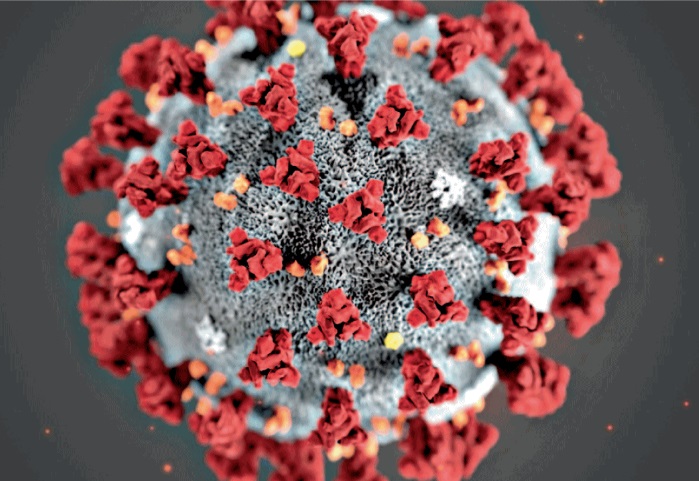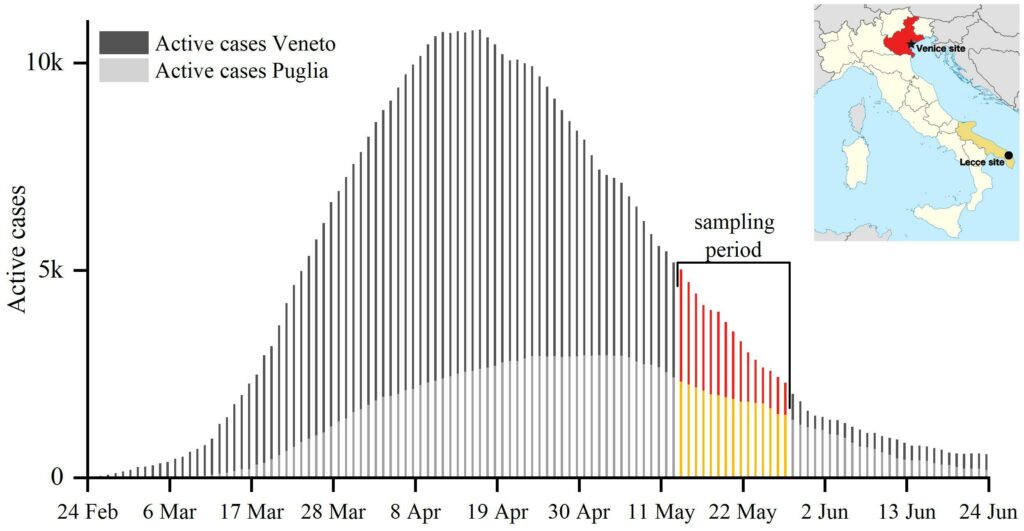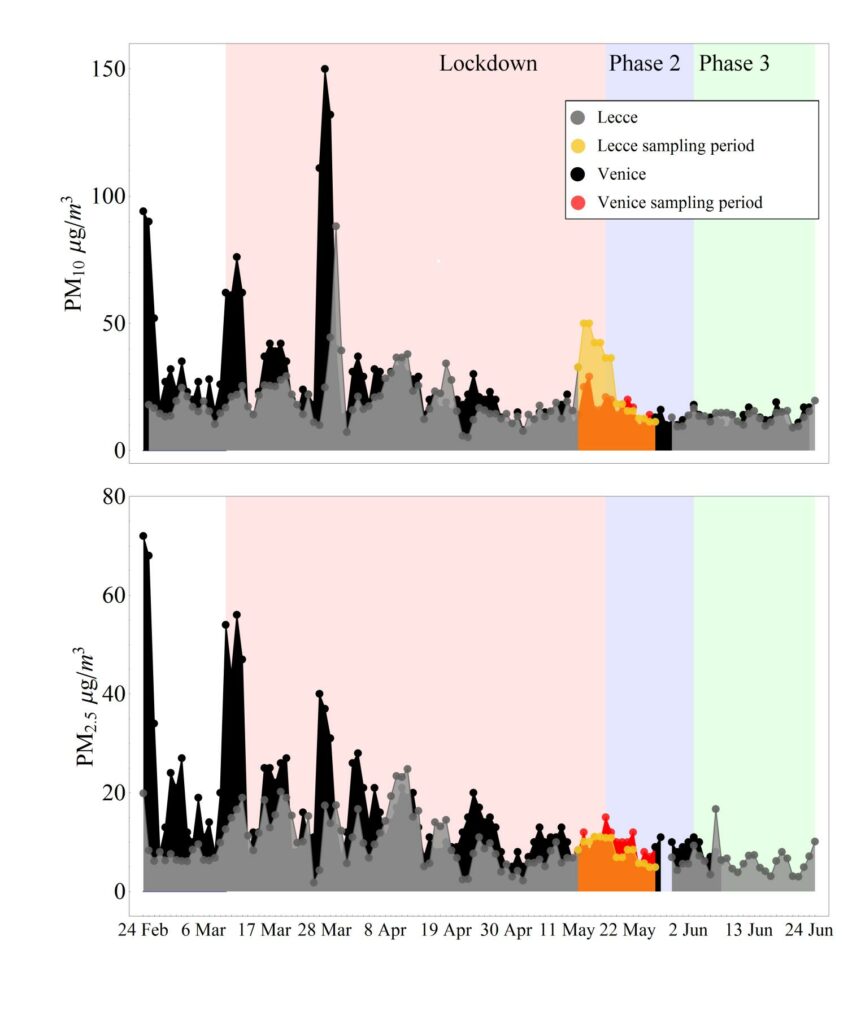Coronavirus in the air? Only in gatherings. Studio Cnr

A multidisciplinary study, conducted in May 2020, analyzes the atmospheric concentrations of SARS-CoV-2 in Venice and Lecce, highlighting the implications for airborne transmission. Here are the results
"All the samples collected in residential and urban areas in both cities were negative, the concentration of viral particles was very low in PM10 (less than 0.8 copies per m3 of air) and in each size range analyzed (less than 0 , 4 copies / m3 of air). Therefore, the probability of airborne transmission of the contagion outdoors, with the exclusion of those very crowded areas, appears very low, almost negligible ". This is what Daniele Contini, CNR-Isac researcher underlines, explaining the results of the multidisciplinary study, conducted in May 2020, which analyzed the concentrations in the atmosphere of Sars-CoV-2 in Venice and Lecce, highlighting the implications for airborne transmission. The research, published on Environment International, was conducted by Cnr-Isac, Ca 'Foscari University of Venice, Cnr- Isp and the experimental zooprophylactic institute of Puglia and Basilicata.
The rapid spread of Covid-19, and its generation of outbreaks of different intensity in different regions of the same country, have raised important questions about the transmission mechanisms of the virus and the role of transmission in the air (called airborne) through respiratory droplets. reads in a note from the CNR: "While the transmission of Sars-CoV-2 by contact (direct or indirect via contact surfaces) is widely accepted, airborne transmission is still the subject of debate in the scientific community".
Thanks to a multidisciplinary study, conducted by the Institute of Atmospheric and Climate Sciences of the National Research Council (Cnr-Isac) of Lecce, by the Ca 'Foscari University of Venice, by the Institute of Polar Sciences of the Cnr (Cnr- Isp) of Venice and the Experimental Zooprophylactic Institute of Puglia and Basilicata (Izspb), the concentrations and size distributions of viral particles in the outdoor air collected simultaneously, during the pandemic, in Veneto and Puglia in the month of May were analyzed. 2020, between the end of the lockdown and the resumption of activities.
The research, launched thanks to the "Air-CoV (Evaluation of the concentration and size distribution of Sars-CoV-2 in air in outdoor environments) project and published in the scientific journal Environment International, highlighted a low probability of airbone transmission of the contagion to all outside except in the assembly areas.
"Our study examined two cities with different diffusion impact: Venice-Mestre and Lecce, located in two parts of the country (north and south Italy) characterized by very different rates of spread of Covid-19 in the first phase of the pandemic ”, Explains Daniele Contini, CNR-Isac researcher.
During the first phase of the pandemic, the spread of Sars-CoV-2 was exceptionally severe in the Veneto region, with a maximum of 10,800 active cases (i.e. infected individuals) as of April 16, 2020 (approximately 10% of the total Italian cases ) out of a population of 4.9 million. Instead, the Puglia region reached the maximum of active cases on May 3, 2020 with 2,955 cases (3% of the total Italian cases) out of a population of 4.0 million people. At the beginning of the measurement period (13 May 2020), the Veneto and Puglia regions were affected by 5,020 and 2,322 active cases, respectively.
“The role of airborne transmission depends on several variables such as the concentration and size distribution of viral particles in the atmosphere and weather conditions. These variables then differ according to whether they consider us outdoor and indoor environments ”, underlines Marianna Conte, researcher at Cnr-Isac.
The potential existence of the Sars-CoV-2 virus in the aerosol samples analyzed was determined by collecting the atmospheric particulate of different sizes from the nanoparticles to PM10 and determining the presence of the Sars-CoV-2 genetic material (RNA) with diagnostic techniques advanced laboratory.
"All the samples collected in residential and urban areas in both cities were negative, the concentration of viral particles was very low in PM10 (less than 0.8 copies per m3 of air) and in each size range analyzed (less than 0 , 4 copies / m3 of air) ”, continues Contini. “Therefore, the probability of airborne transmission of the infection outdoors, with the exception of those very crowded areas, appears very low, almost negligible. In gatherings, concentrations can increase locally as well as the risks due to close contacts, therefore it is absolutely necessary to comply with the anti-gathering rules even in outdoor areas ".
“A greater risk could exist in indoor environments of poorly ventilated communities, where the smallest respiratory droplets can remain in suspension for longer times and even deposit on surfaces”, underlines Andrea Gambaro, professor at Ca 'Foscari. “It is therefore desirable to mitigate the risk through periodic ventilation of the rooms, the sanitation of hands and surfaces and the use of masks”.
"The study and application of sensitive analytical methods with the use of technologically advanced platforms allow, today, to detect the presence of Sars-CoV-2 even at very low concentrations, as it could be in outdoor and indoor environments, making the increasingly reliable laboratory diagnostics ”concludes Giovanna La Salandra, manager of the Izspb Scientific Research and Development Department.
The study of concentrations in some indoor community environments will be the subject of a second phase of the Air-CoV project.


This is a machine translation from Italian language of a post published on Start Magazine at the URL https://www.startmag.it/sanita/coronavirus-nellaria-solo-negli-assembramenti-studio-cnr/ on Fri, 20 Nov 2020 12:01:16 +0000.
